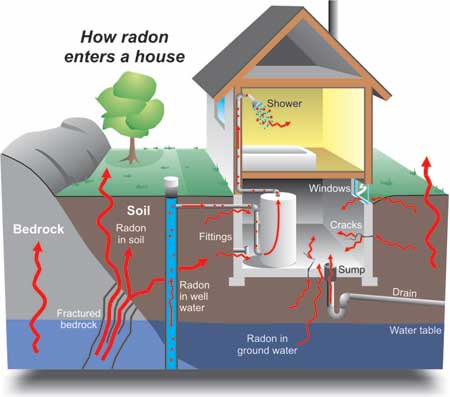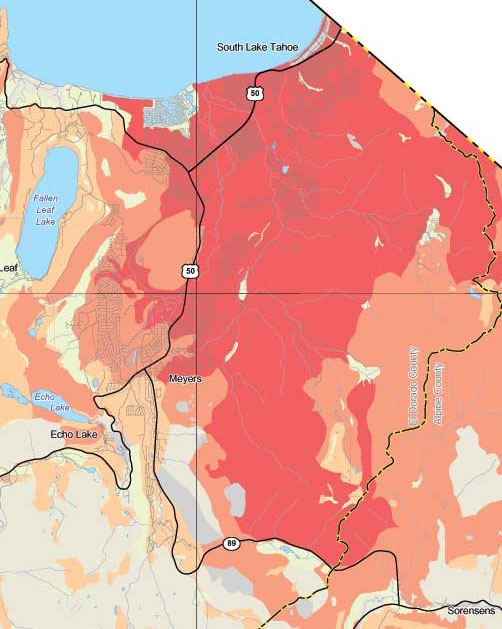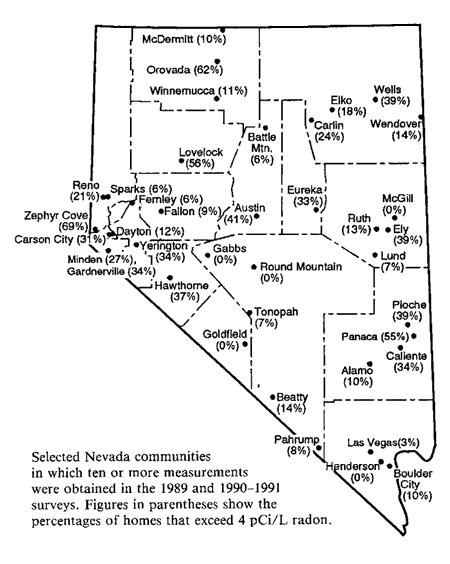What is Radon Gas?
Radon is a radioactive gas that comes from uranium decomposing in soil, rock and water. Uranium is found in all soil and appears in higher concentrations in granite and shale. As uranium decays into gas it moves through the soil and into the atmosphere where it either harmlessly dissipates into the air or becomes trapped inside a structure. Radon gas is colorless, odorless and tasteless and thus cannot be detected without testing. Radon is the number one cause of lung cancer among non-smokers, according to Environmental Protection Agency (EPA) estimates and overall Radon is the second leading cause of lung cancer. Exposure to radon increases the risk of lung cancer for current or former smokers by 8 to 10 times according to the EPA.
The EPA, California Department of Public Health, and the World Health Organization all recommend testing any structure where people congregate, play, work or live for the safety of those occupants.
Radon Measurement
Radon levels are measured in “picocuries” per liter of air. (pCi/L)
A reading above 4 picocuries per liter (4 pCi/L) is considered to be dangerous by the EPA while the World Health Organization adheres to a more conservative level of 2.7 pCi/L for safety. The EPA suggests mitigation in properties where levels are between 2.0 and 4.0 pCi/L and absolutely recommends that you take steps to fix (mitigate) if readings are at or above 4.0 pCi/L.
How Radon Gets Into Your Home, School, or Business
As radon rises through fissures in the ground lower air pressure inside the structure will draw the radon gas up through any cracks, seams or openings in the foundation allowing it to enter the structure. Newly constructed buildings are just as likely to have high levels of radon as older properties. Radon is unpredictable so even if you live in a relatively low risk area, your property could have significantly higher levels than a neighboring property.
Radon is equally likely to appear in structures with slab foundations as it is in structures with basements, crawlspaces or pile foundations. This is because the radon microns are so small that they can flow up around a pipe or through minor cracks in the foundation. Thus, any structure where people and pets live work or play should be “mitigated” if the levels are at or above 4.0 pCi/L and one should consider the risks where readings are at or higher than 2.7 pCi/L.
What Can I Do to Protect My Investment and Family?
The only way to determine whether you and your family are safe from the effects of radon is to test for it. Smokers and parents of small children should absolutely test their home as both are more susceptible to the dangers or radon gas. If you find your home or business has elevated levels of radon the problem can easily and affordably be fixed with a professional radon mitigation system.
Can pets get cancer from radon?
Dogs and cats can be impacted from living in a home with radon. They tend to spend most of their time in the home and thus have more exposure to the gas than their humans do. The impact on your pets can be hard to ascertain until they exhibit respiratory problems as a possible precursor to lung cancer.
Radon in Tahoe
Many areas within the Tahoe Basin have elevated levels of radon with a University of Nevada, Reno study indicating averages of 67% on the East Shore.
South Lake Tahoe Has High Levels of Radon
Given the extensive granite in the Lake Tahoe Basin, it is no surprise that many homes in our area have dangerously high levels of radon gas. In a community health survey conducted by Barton Memorial, local lung cancer rates were 9.4% higher on the South Shore than in the rest of California.





